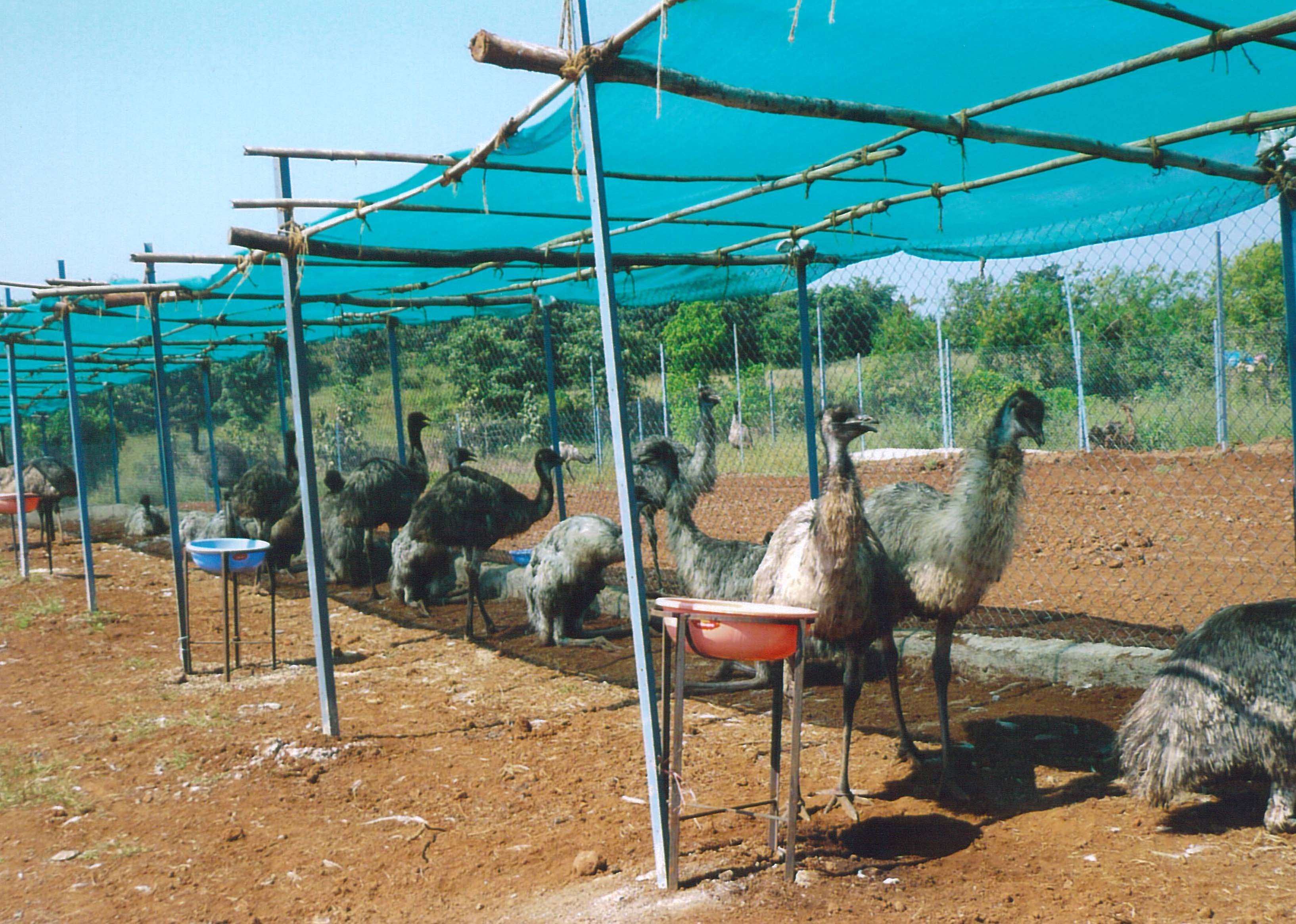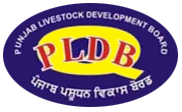
Ostrich
1.0 Health consciousness in the modern civilisation has led to diversified food habits. The European communities have gone in search of foods which contributed mainly to the health diets of population. In this process, animal and avian species have contributed to a large extent in providing the required health foods like milk, meat and eggs. The tendency to go for low calorie foods has resulted in increased demand for new species for meat purpose. At present the ostrich meat ranks highest among health foods in Europe. The recognition of ostrich meat in terms of health value is attributed to “zero” percentage fat, low cholesterol and calories, rich in protein and iron. The demand and interest in ostrich meat has been increasing especially after the threat of ‘mad cow’ disease. The unique culinary tastes of ostrich meat have been developed into Sashin, stir-fry and steak type meats. These meats have flooded the restaurants in Europe, Japan, Australia and China in a big way.
2.0 Besides meat, the ostrich has been able to produce high premium feathers, oil and other by-products. The ostrich skin converted into luxury leather is used for making variety of articles. The bleached dyed feathers are used as the raw material for fashion accessories, show business, brush industry and automobile accessories.
3.0 Ostrich a large flightless hardy bird of African origin can survive in temperatures ranging from two degrees to fifty degrees Celsius. It can be reared on barren land and mainly consumes Alfa-alfa, Lucerne and water. It belongs to running bird family. It has long neck and small head, with large eyes and short broad beak. It spreads small wings while running. The long powerful legs are used for defence. The feet have only two toes. Male ostriches are black, with white wings and tail. The white feathers of the male, which are large and soft, are the ostrich plumes of commercial value. The female is dull greyish brown. The males are polygamous, and move with three or four females or in groups of four or five males accompanied by mates and young ones. The females lay their yellowish white eggs together in a single large depression in the sand. The eggs weigh about 1.48 kg. each and have a volume of about 1.4 liters. The male sits on them at night and the female incubates them by day. The life expectancy is about 60-70 years. The general characteristics are given in table - 1.
4.0 The first organised ostrich farm was established for feathers in about 1863 in Karoo and Eastern Cape region of South Africa. The act for the preservation of the wild ostrich was passed in 1870 in Cape Colony. In 1884 Cape Government imposed high export duty on ostrich, and eggs to protect their monopoly supply of feathers to European markets. In the same period people from North and South America, and Australia who became interested in ostrich farming transported the birds to their countries. Several shipments of birds were imported into Australia during period of 1881-1905 and several farms were established in South, West Australia and Queensland. The scientific management of ostrich farms showed good profits, and edge over other enterprises. This resulted in popularity of ostrich farms in Australia. The formation of Australian Ostrich Association (AOA) and Australian Ostrich Co. Ltd. resulted in development of ostrich industry to a large extent. At present the Australian Ostrich Association has 4000 members with 70000 ostrich birds. The ostrich farms are found in Singapore, Hong Kong, Indonesia, Israel, USA and France.
5.0 The increased demand of ostrich over the past few years has given way to rearing birds under controlled systems. The intensive system became popular because of adoption of scientific technologies, reduced risk of diseases through improved bio-security measures, genetic selection, nutritional innovations, health regimes, and extensive disease surveillance. Scientifically proven management practices resulted in low cost production and improvement in quality of ostrich products.
6.0 The comparative economics of ostrich v/s beef cattle presented in table 2 indicates that ostrich farming has an edge over cattle farming in terms of high returns on investments. Added to the high returns the operational advantages found are :
i.The bird can be reared in paddock alongwith sheep, goat and cattle.
ii.The birds need no dipping, drenching, milking and shearing.
iii.The adaptability of the bird is equally high on annual and perennial pastures or scrub.
iv.The bird can be reared both in hot and freezing temperatures.
v.The bird has shown high sustainability in irrigated as well as rainfed farming environments.
vi.There is virtually no waste products in the bird.
vii.The size of the farm is not a limiting factor.
viii.The added value segments all along the products is very high.
The limiting factors that can be prudently managed are :
i.High capital investments for setting up of the farms.
ii.The markets for meat and its byproducts are not easily accessible.
iii.The high penalties for slaughtering older birds (20 months and above) in the European countries.
iv.The birds are potential and vulnerable for avian disorders particularly for Newcastle disease.

7.0 Liberalised economic policies adopted in 1991 and GATT agreement has given boost to Indian agriculture. After the success of poultry industry during last two decades ostrich farming has opened new vistas for development. The temperate climate of India with zero temperatures of sub Himalayan ranges and 45+ temperatures of Rajasthan desert are found congenial for setting up ostrich farms in the country. A beginning has been made to promote ostrich farms in India through Indo-French Seminar on “Advanced Food Technology and Ostrich Farming” organised on 25 February 1997 at Bangalore by Greater Mysore, Chamber of Industry (GMCI) in association with Karnataka Agro Industries Corporation (KAIC), and was co-sponsored by Indian Overseas Bank. Later an “Exhibition cum Seminar on Ostrich Farming” was organised at Bangalore on 3-4 November 1997 by a newly formed Global Ostrich (India) Pvt. Ltd., a joint venture company of Australia. The entrepreneurs, businessmen and progressive farmers in large number attended the same. A decision was taken, in the seminar to take up franchise programme for setting up ostrich farms. Meanwhile, a Forum on Technology for Ostriches (FOTO) has been formed which will act as an umbrella group to bring together farmers and entrepreneurs interested in ostrich farming and to act as a nodal agency to collaborate and negotiate with worldwide ostrich agencies like Auxavia France, South Ostrich Farmers Association and CCI Global Ostrich Group, Australia and also to develop and establish a network with similar agencies at Singapore, Hongkong, South Africa, China and New Zealand.
8.0 As to the new farming activity, the Karnataka Government has announced to allot government lands to those interested in taking up ostrich farming in the state. Some of the interested entrepreneurs from Tamil Nadu and Karnataka have approached banks to extend financial support for setting up of ostrich farms and also for taking up research on ostriches.
9.0 Animal Welfare Organisation of Bangalore and Beauty without Cruelty, International Charitable Trust for Animal Rights, Pune have started campaign to oppose this venture. It is argued that India with its heritage of non violence does not need to go in for business that involves killing of beautiful innocent birds for meat purpose to satisfy whimsical food faddists.
10.0 New economic activity which need to be experimented always finds opposition in one or the other ways. There is always scope for improvement in farming systems which can be modified and changed to suit the economic and social needs. A beginning in the country has been already made. It is prudent to welcome such new ventures which is beneficial to our farmers and the national prosperity. Let the laws facilitate business and production and not smoother the genuine spirit of business. This may also open a new investment opportunity for banks in the near future.
TABLE - 1 GENERAL CHARACTERISTICS FOR OSTRICHES
A. FAMILY Running birds Place of Origin
Ostrich Africa
Emu Australia
Rnea South America
Cassowary New-Guinea
Kiwi New-Zealand
B. General Identification Male Female
Colour black grey
Sexual Maturity 30 months 24 months
Height 2.60 m 2.40 m
Weight 150 kg 130 kg
Speed 70 km/h 70 km/h
C. Breeding specifications
Social Life 1 male for 2 females
Duration of life 70 years
Breeding years 30 years
Laying 60 eggs average per breeding
Fattening birds 30 (12 months)
Egg weight 1.6 kg (24 hen eggs weight)
Mortality Nil (upto 3 months age)
Food secial diet and fresh food
Particular nature growth of 1 cm/day during the 1st 6 months
Slaughtering age 12 months
Meat Output 30-35 kg fillet and steak
Skin output 1.40 m2
D. PRODUCTS UTILITIES
| Products |
Characteristics |
Outlets |
| Leather |
Pearl or grain Suppleness, Rusticity |
Luxury Moroco-Leather Goods Baggage, High Fashion Shoes |
| Meat |
Red, Tender, Tasty Dietic |
Roasted, Grilled, Panful, Nature |
| Feather Tourism
|
Suppleness, Anti-Static |
Decoration, Brushes, Festivals Show-Farm, Natural or Painted Egg Shells |
E. DISTRIBUTION FOR INDUSTRY
| Leather
Meat
Feather
|
Finished skin
Raw skin
--
Natural, Bleached,
Dyed |
HERMES
Tannery specialised in Luxury & exotic products
Restaurant, Butchery
Delicacies, Supermarkets
Festivals, Fashion Show and
Theatre show, brush industry |
F. PRODUCTION SYSTEM :
i) Is based on the symbosis of 2 different rearing technics : poultry and cow farming.
ii) Production is a semi-intensive farming : indoors and outdoors (building and free space)
G. PRODUCTION CYCLE (4 STEPS)
| Particulars |
Age |
Housing |
|
Starters (Chicks)
Fatterens (Ostriches)
Selection (Ostriches)
Breeders (Ostriches)
|
1 day to 3 months
4 to 12 months
12 to 24 months
+ 24 months |
Poultry Building - adjoining 3 free space
Cow Building or sheep fold + adjoining free space
In free space (Building is optional_
In camps at the ratio of 1 trio to 5 trio per run (Building is optional) |
The general practice is one male for two females (trio) for an average output of 60 eggs per female for breeding season, with good rearing condition one can get 30 fatterning birds (12 months period).
H. Technical specifications for an ostrich farm
| Age |
Indoor |
Outdoor |
| 1-21 days
22-90 days
90 days - 300 days
Breeders/Selection
12 months and older
|
building 0.5 sq.m./bird
building
1.00 sq.m/bird
open shelter
1 sq.m./bird
open shelter
5 sq.m./bird |
according to the climate 3-5 sq.m./bird
required 10 sq.m./bird
minimum 50 sq.m
100 sq.m./bird (slaughtering) minimum space 1000 sq.m
500-800 sq.m./bird
minimum space 1000 sq.m. |
Note : (i) The open shelter should offer protection on 3 sides with a door on the 4th side.
The opening will be minimum 1.50 wide. The shelter will be minimum 2.50 m high.
(ii) The fence will be minimum 1.50 m high for the birds and breeders (according to the farm and objectives) with a post for every 4 meters.
Source: Ostrich farming : Paper presented by Mt. Laurent Simon, Managing Director, Auxavia, France in the Indo French Seminar on Advanced Food Technologies and Ostrich Farming, Bangalore, India on 26.02.1997
Table - 2. Comparison of Beef Cattle v/s Ostrich
Productivity of Ostriches varies widely but even a conservative estimate of 30 offspring a year compares favourably to cattle productivity. This comparison considers conservative market prices.
Sr.No. |
Particulars |
Beef Cattle |
Ostrich |
1 |
2 |
3 |
4 |
A.
i)
ii)
iii)
iv)
v)
vi)
vii)
viii)
ix)
x)
B.
i)
ii)
iii) |
Costs
Level required
Gestation
Offspring per year
Meat Production Time Frame
Meat Production per annum (3)
Square Feet of Hide (3)
Number of hides
Cost of Feed per day
Breeding years
Meat Price per pond
Income per annum
Hide value (1)
Slaughter (meat) value (2)
Plumage value (3)
|
10,000 sq.m. per pair
280 days
1
10 months
550
50 to 60
1
$ 1.00 - 1.50
10 to 11
$ 1.00
--
$ 550
--
|
1,600 sq.m. per pair
42 days
30
12 months
1,800
420
30
30 Cents
40 to 45
$ 10.00
$ 10500
$18000
$1500 |
| Total Economic Value (3) |
550 |
30,000 |
(1) 14 sq.ft.x$25 sq.ft.x30 offspring per year
(2) 60 lbs (choice cuts)x$1000 lbs x 30 offspring
(3) Assumes an average of 30 birds per year
Source: Ostrich farming : Paper presented by Mt. Laurent Simon, Managing Director, Auxavia, France in the Indo French Seminar on Advanced Food Technologies and Ostrich Farming, Bangalore, India on 26.02.1997






